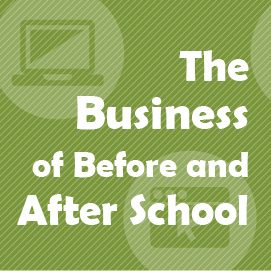This is the third of a biweekly series about “The Business of Before and After School.” Look for other posts on this topic by selecting Business from the category list below right.
Congratulations, you will receive a grant for three years. This predictable income will allow you to begin your program or to expand into other program areas. But what will you do when this revenue source dries up and you have staff salaries to pay and program supplies to purchase, let alone the fact that your new program is successful and serving lots of kids and families who are all now relying on you?
The smart program will use those first precious grant funded years to design and implement a plan to diversify it’s funding sources, so that when one funding source ends others begin to fill in the gap. Easier said than done you say; I beg to differ. The money is out there, many non-profits today are thriving, but only through planning and purposeful diversification of revenue sources will they continue to succeed.
Let’s follow one path to financial stability:
ABC Afterschool is based in an urban setting and has just received a three year Foundation grant to operate an afterschool program in an elementary school. The funding available pays for everything (with the exception of some in-kind support from the Board of Education i.e., free rent, electricity, heat, telephone service). The administration of ABC hires staff, purchases supplies and creates a great program, markets and finds lots of participants, and for three years provides excellent services. ABC refiles for the grant on time, however at the last minute the grant review committee chooses another program based at a local community center over the
ABC program because of better facilities (it has a pool). At this point ABC must close it’s doors right? No, because the ABC administration was previously concerned about this scenario, they had created a funding diversification plan to protect the organization from this exact outcome. The plan they put in place included the following three components: First, a conservative one-year budget for the year after the last grant funded year (how much money will we need? This gave them the baseline numbers to use when working on the rest of the plan). Second, they enlisted the support of others to study and decide on other possible revenue sources, and most importantly, the third item was how they plan to go to work attaining the funding.
I’m all about “the who,” “the how” and “the why” when it comes to a plan, so let me break down the three steps ABC took listed above to find their sustainability in program revenue. Step one was creating the budget. The ABC administration took the budget they submitted for the grant and then reviewed and adjusted it at the end of their first year. They carefully reviewed the budget and made a final adjustment to compensate for a conservative, barebones bottom line. This way they felt confident that they could defend every dollar in their budget, and still run the program (they could survive!). Step two was getting help in their cause. The ABC administration turned to its parents, school community, neighborhood, local businesses, and local foundations to assist them in helping themselves.
The first meeting was just a meeting of the minds; a meeting in which stakeholders and those just concerned with one afterschool program’s health could sit and talk. The outcome of that meeting was the development of a core group of people representing many organizations, who committed to simply assist in developing the sustainability plan. The following meetings over the course of a year were all spent on developing, writing and refining the plan. At the end of this process the plan included two pie charts, the first one representing the current revenue source (which in this case was only the grant) and the other representing the projected revenue sources (grants, fees for services, donations, fundraising, State Aid). Finally, the third step included an even smaller number of key people from the group, including the ABC administration, a parent, a funder, and Board of Education member, creating a strategic revenue diversification plan listing known sources of revenue in each of the above stated pie chart areas, who will do the work to acquire the funds and set a deadline for when it needs to be done. The final step was the action of implementing the plan.
Let’s give a positive outcome to this hypothetical situation: The administration, with the support of mainly the smaller group, using the larger group when needed, were able to successfully add pieces to the pie in the form of annual fundraising (they started the first annual ABC Golf Tournament), an annual appeal to their community, the sponsorship of a local bank, funding from a state agency (for services they already were providing—but now the state is utilizing), a sliding scale fee for some of their services, and a commitment of continued in-kind support from their host Board of Education. You get the idea, there are ways to diversify out there, but it must start with a discussion which leads to a plan that is then implemented. This is taking control of your own financial destiny and reducing the annual heartburn associated with grants. (Hey, and if ABC Afterschool still gets a grant or two they can expand their Programming!)
Vince LaFontan has worked in the after school field, and as a consultant to youth-serving organizations, for 20 years. Currently he is the Director of Farmington Extended Care & Learning in Farmington, CT , a Board Member of the Connecticut After School Network, and Vice Chair of the National AfterSchool Association’s Board of Directors in Washington, DC.


